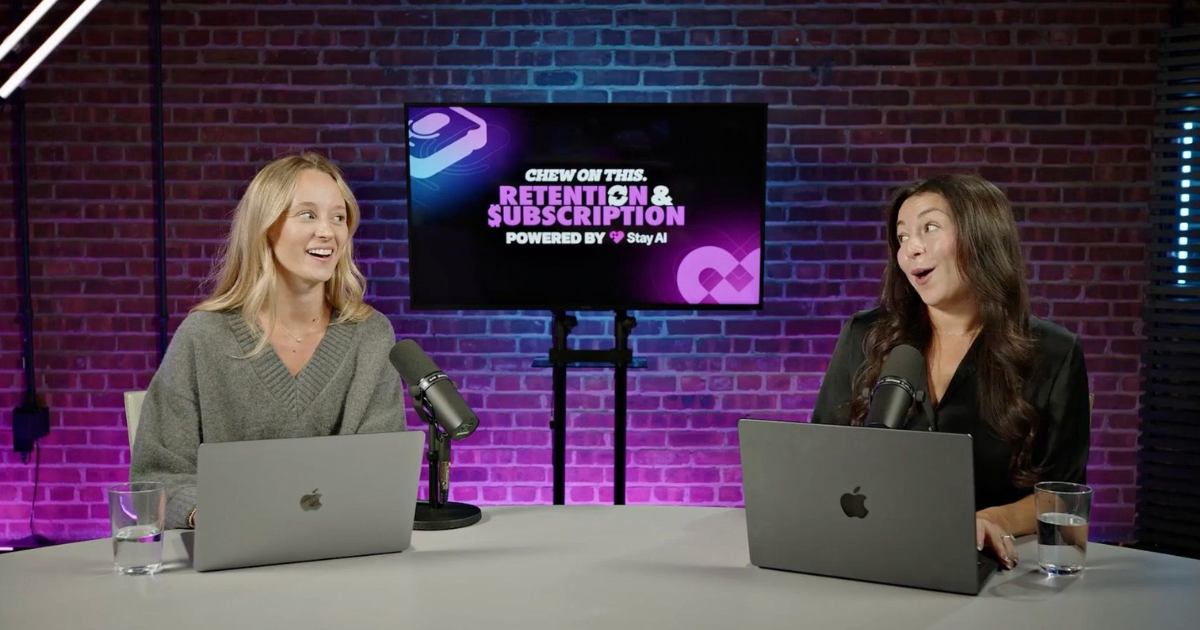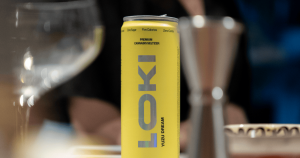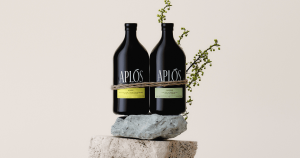Partner Content: Stay AI
When Gina Perrelli launched Stay AI, she wasn’t chasing the next shiny marketing trend. She was doubling down on something most CPG brands overlook: retention.
As Co-Founder and CEO, Perrelli has helped transform how brands think about subscriptions, turning what was once just a transactional feature into a strategic growth engine.
In this conversation, she shares how retention is a marketer’s secret weapon, why cancel flows are goldmines for insights, and how she believes AI will shape the future of customer loyalty.
Dry Atlas: You’ve built Stay AI into one of the top subscription platforms on Shopify. What was the original spark that led you to start the company?
Gina Perrelli: The spark came when I was at Lunar Solar Group, where I co-founded and led the retention division. For the longest time, subscription felt like a weak piece of the tech stack. I was tired of hearing, “We can’t test if a free gift would cut down on churn,” or “We can’t A/B test cross-sells.”
When Shopify opened their subscription API, I saw an opportunity to build a subscription tool that was more of a marketing platform. If Shopify handled the transactions, we could focus on delivering deeper value through retention strategies. That’s what put Stay on the map. We were the first to introduce things like A/B testing free gifts through our Experience Engine. That innovation was the original spark.
DA: You launched into a competitive category. What was missing from the existing solutions that you felt uniquely positioned to solve?
GP: What was missing was the ability to truly test and optimize. Existing tools didn’t let you A/B test retention tactics or explore strategies like gifting, cross-sells, or product add-ons in a meaningful way. I knew there was massive untapped revenue in those areas. Many subscription brands rely heavily on one hero product and neglect the add-ons, when in reality, at least 10% of subscription revenue should come from add-ons. We built Stay to make that level of testing and optimization possible.
DA: Stay AI’s product is retention-focused from the ground up. Why did you choose to center retention, not just acquisition, as the core driver of value?
GP: I’ve always been a “retention girlie.” Even back when I was starting Lunar, I remember people telling me acquisition was the future and asking if I wanted to switch. But I’d already spent years in retention and believed in its impact, so I stuck with it, and I still do, 12 years later.
Retention is just as critical as acquisition, if not more. Saving even 10% of customers from canceling can create a massive lift in revenue. One extra order per customer at scale changes the trajectory of a program. When you combine cancellation-flow saves with strategies like add-on revenue, you’re looking at 20%+ lifts that make subscription programs meaningfully more profitable.
DA: You were early in layering AI into subscription workflows. How do you decide where AI adds real value versus just complexity?
GP: We started with Retention Engine, a company we acquired right before our Series A. They were using AI in a really practical way: detecting the best treatment for a customer who was about to cancel. It looked at factors like what someone subscribed to, whether they’d canceled before, what treatments they’d tried, and even where they lived. That was a clear, high-impact use case.
From there, we expanded into predicting churn risk before someone even hit the cancel button, knowing five days before an order went out whether a customer was likely to churn. We then layered AI into Smart Dunning and WinbackEngine.
Each step was deliberate and focused on places where AI could deliver quick wins without introducing unnecessary complexity. AI is advancing rapidly, and while personalization at scale sounds exciting, it can easily break down in edge cases. We’ve always prioritized scalable, error-proof applications where AI truly moves the needle.
DA: Where do you think AI will have the biggest impact next when it comes to retention?
GP: I think the next big leap is in predictive insights like using AI to not only flag churn risk but also determine the right timing and treatment to keep someone loyal. Imagine knowing exactly when to reach out and with what message. I also think conversational AI will play a huge role: tools that allow brands to “talk” to their data and surface retention insights in real time. That combination of prediction and interactivity will unlock a new level of personalization and loyalty-building.
DA: Stay AI has become a go-to for emerging brands and category leaders like CANN, BRĒZ, and Ghia. What do you think has driven that traction?
GP: A big part of it is that Stay was built by marketers, for marketers. The era of dev teams picking a subscription tool and just plugging it in is over. Brands need tools that go far beyond processing transactions. They need platforms that empower marketers to run sophisticated programs without engineering bottlenecks. That marketer-first focus, combined with a toolkit that makes testing, optimizing, and innovating simple, is what’s made Stay a go-to for brands of all sizes.
DA: Many brands still treat cancel flows as an afterthought. Why do you believe they’re such a critical moment in the customer journey?
GP: Cancel flows are one of the most undervalued parts of the subscription journey. Yes, improving save rate is the obvious first step, but the cancel flow is also a goldmine of insights. It tells you how to reconfigure your entire subscription program.
If customers are canceling because they have too much product, maybe your default cadence is wrong. If they’re canceling because they don’t feel results, maybe your early lifecycle education needs work. A cancel survey doesn’t just reduce churn. It informs how you position, sell, and support your product from day one. Treating it as an afterthought means you’re leaving both money and insights on the table.
DA: What does great retention actually look like?
GP: Great retention isn’t about optimizing one metric in isolation. It’s about zooming in and out across the whole lifecycle. Too often, brands obsess over conversion rate, save rate, or subscription opt-in without seeing the bigger picture. Lifetime value forces you to think holistically. Sometimes you’ll take a short-term hit in one area to strengthen loyalty long-term.
For example, defaulting to subscription on PDPs may slightly impact conversion rate, but subscribers are worth far more over time. Similarly, tweaking cadence might lower your immediate save rate but reduce cancellations overall. The best programs focus on maximizing true LTV, not just the siloed metrics.
DA: If you were advising a CPG founder building a subscription program today, what’s one mistake you’d help them avoid from the start?
GP: Default to subscription, and default to the right cadence. Too many founders chase quick wins by setting aggressive reorder cycles, only to create overstocking issues that drive churn. If your product makes more sense at two or three months, set that expectation from the start. And don’t forget education, especially for “better-for-you” products or supplements where results take time. Help customers understand why they should stick with it. In many cases, it’s smarter to put someone on a three-pack every three months than one pack every month. It sets them up for success and strengthens retention.
DA: You’ve been inside so many high-growth brands. What separates the good from the great when it comes to long-term customer loyalty?
GP: The great brands know how to balance short-term wins with long-term strategy. They don’t just chase one metric. They test, iterate, and give strategies enough time to prove out. They pair quick, measurable wins (like targeted upsells or gifts) with longer bets that may take months to show results. The best brands keep the customer at the center, test rigorously, and stay disciplined in execution. That’s what compounds into long-term loyalty.






